“Chromosomes have nothing to do with your abilities or potential in a woodshop.”
— Barbie, of Barbie Woodshop
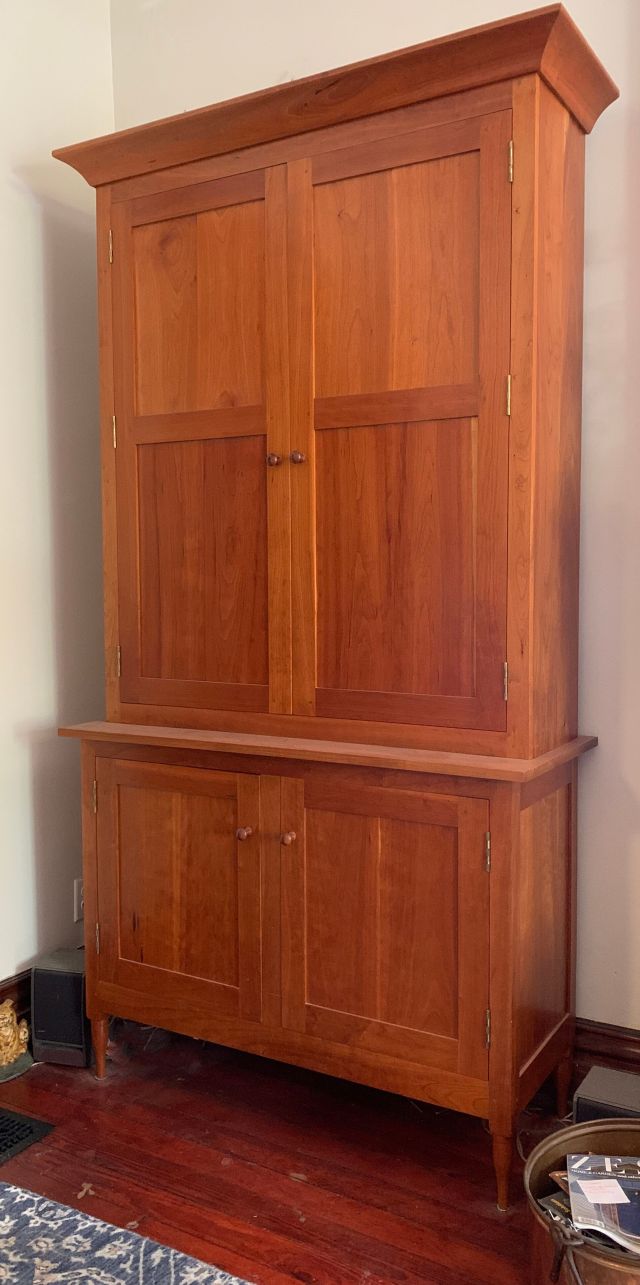
Among the first questions posed to any woman in woodworking seems to be: “How did you get into this?” Followed by: “Was your father a woodworker? Your husband?”
In Megan Fitzpatrick’s case, anyone familiar with her whip-smart writing about her home restoration exploits might speculate that her involvement in woodworking began with her interest in restoring old houses. She’s lived in old houses her entire life — first an Arts & Crafts cottage; then, when she was 7 or 8, her family moved into an antebellum farmhouse in Louisville. Amazingly, that property still had its original smokehouse and summer kitchen. Because it was more than a century old, she says, “it always needed work.” But her father “wasn’t terribly handy.” So, no, she didn’t get started in woodworking because of her dad; nor was it really because of old houses. Rather, she arrived at wood through words.
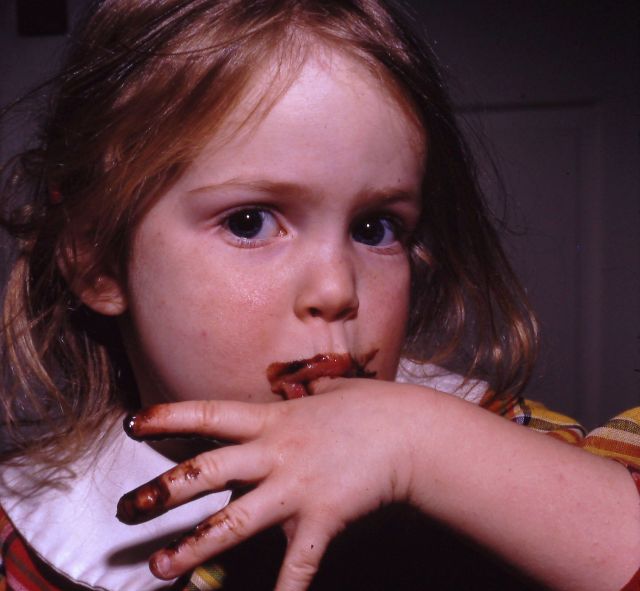
“I was brought up to be an academic,” she says. “There was no question that I would have to go to college,” though she doesn’t recall being pressured to pursue any particular course of study. A longtime fan of Dave Barry and Richard Des Ruisseaux, humor columnists for the Miami Herald and Louisville’s The Courier-Journal respectively, Megan wanted to be a journalist. “When I got older,” she adds, “I realized humor was pretty much the hardest thing to write.” She enrolled in undergraduate studies at the University of Cincinnati, which had no journalism major. “So I got a degree in English Literature instead.”
Those who know Megan as an erudite and entertaining woodworking instructor, author and editor may be shocked to learn that she failed out of college. “I was so busy having so much fun working for the school paper, The News Record, that I never went to my classes — except for the few I liked. I was asked to leave.”
Needing income, she took the kinds of retail and service-industry jobs that gave many of us our start — selling clothes at Banana Republic, serving customers at a coffee shop. The first glimmerings of a break came in the early 1990s, when she was hired as a clerk at The Cincinnati Post, a position that involved “doing whatever you were told: go pick up donuts, go to the printing plant. We would get the papers when they came off the press and bring them back for the writers and editors. We ran things up and down stairs to the ‘morgue’” (where clippings were kept).
It wasn’t long before she realized she wanted to write, and her editor began giving her opportunities to do so — though she stresses it was “always as a guest reporter” and the assignments involved matters of such non-pressing local interest as recent goings-on at the Great Dane Rescue Society. Her first professional byline was covering a Kenny G concert, because, as she says, “no writers on staff wanted to do it.” She wanted to write more, but they wouldn’t hire her in that capacity without a degree.
With fresh motivation, Megan signed up for evening classes with a plan to complete her bachelor’s in English at the University of Cincinnati. By day she worked full-time at The Cincinnati Post, still mainly as a clerk but with the occasional chance to write. She graduated in 1996.
“I immediately realized I liked school again, so I applied to graduate programs for a master’s in English,” she says. She earned a scholarship from The Scripps Howard Foundation for newspaper employees that paid for her tuition and living expenses, and allowed her to complete her master’s in English in two years.
Megan was smitten early on by the works of Shakespeare and his contemporaries. When she was 11 or 12 (she can’t remember exactly) her family traveled to Greece after visiting an aunt and uncle stationed in Germany by the Air Force. As her parents drove their rental car through Greece’s ancient architectural wonders, Megan sat in the back seat with her brother, scarcely looking out the window, so focused was she on memorizing Mark Antony’s oration at Caesar’s funeral.
“Shakespeare’s language was lovely, as were the universal truths revealed in his plays,” says Megan on why she enjoyed Shakespeare then and still does, today. “Anything you want to read about, you can pretty much read about it in Shakespeare’s plays.”
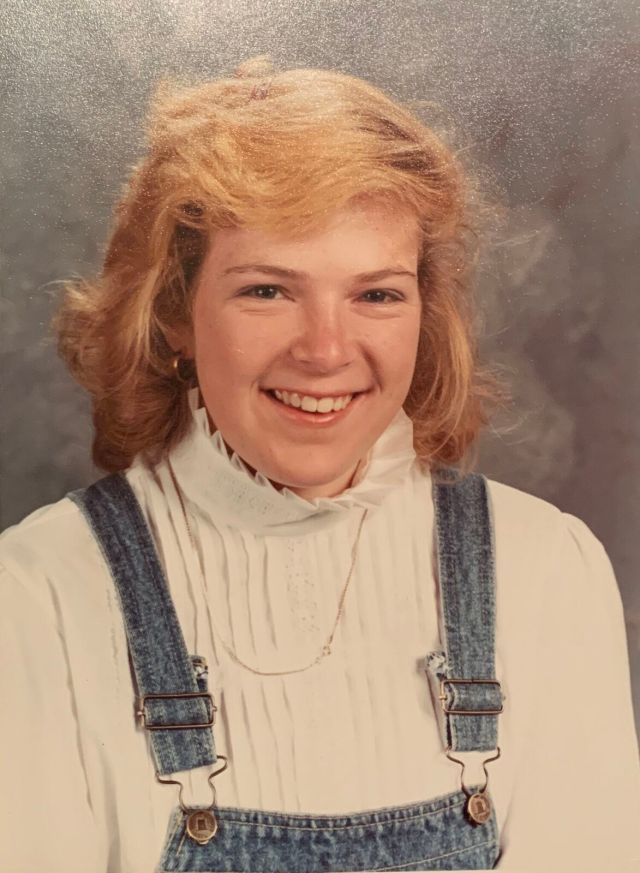
Her favorite play, however, “The Knight of the Burning Pestle,” is not by the illustrious bard. Rather it’s written by Francis Beaumont. “It’s a joke about syphilis,” she says. “But few people know Francis Beaumont, so I say I studied Shakespeare.”
In 1998, when she was 30, Megan was hired by F+W Media, a few months after completing her M.A.
“I was a low-level copy writer, hired to write promotional material,” she says. “I dressed up for work every day — skirts and high heels. My immediate supervisor left and I was hired for her position — promotions manager. It would have been 2000 or 2001, so I was actually in charge of some titles and did all the marketing for them. One of those titles was Popular Woodworking. I would stomp down to the offices of Popular Woodworking in my high heels and short skirt and give the editor and publisher, Steve Shanesy, a piece of my mind, because he was always late returning materials.”
She made an impression. (Christopher Schwarz was promoted to editor just as Megan joined the staff; Steve stayed on as publisher.)

“When Kara [Uhl] was leaving Pop Wood to join the Writer’s Digest team, I had turned in my resignation at F+W to go back to school and get my Ph.D.,” Megan says. “It would have been August 2005. And both Chris and Steve said, ‘Hey, do you want the managing editor job at Pop Wood?’”
The job, she explains, was to be the traffic cop — “making sure people got their stuff in on time, copy editing, making sure people got paid. Basically it was back to my clerking job, but with a better title. But this time I was also working with the words. And there was nothing wrong with being a clerk! It was more intellectually rewarding than making coffee for people.”
At first Megan told Chris and Steve no. Undeterred, they offered her the opportunity to do the job while taking classes. So she changed her mind and stayed. And even though she still planned to leave the magazine eventually in exchange for college-level teaching, she took the opportunity to gain some serious woodworking skills with Chris’s encouragement and the use of the Pop Wood shop (and, she notes, “using Chris’s tools, which he kindly loaned me”). She had always made things, such as a simple bookcase in lumberyard pine held together with angle brackets. But now she was able to use high-quality tools in a well-equipped shop, with expert guidance just a request away. She took to furniture making like a duck to water and built pieces for project articles in the magazine, such as a wall cabinet, a plate rack and a workbench with an LVL top.
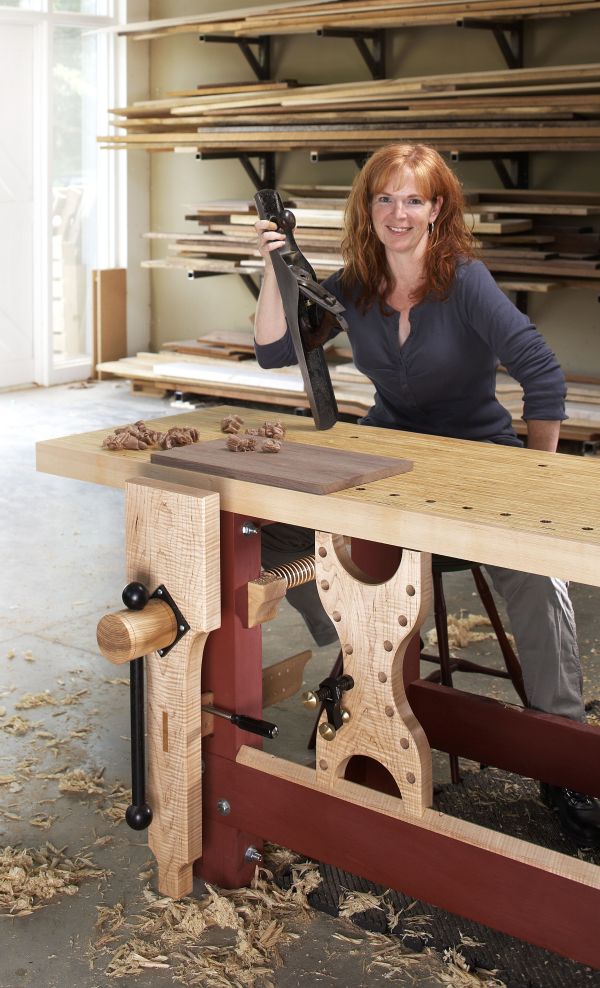
Megan tackled her doctoral coursework from 2005 to 2008, toggling back and forth between the University of Cincinnati campus and the offices at Pop Wood every day. She would leave work, take classes, then come back to the office to make sure everything was done as it should be. “They didn’t mind, as long as the work got done,” she says.

Meanwhile, instead of taking vacations out of town, or even the occasional week off, she was strategically banking paid leave. When it was time to take her comprehensive exams, Steve and Chris let her take off six consecutive weeks to study. To call her days focused would be an understatement. “I sat on the couch, had a cat on my lap, read my books,” she says. “It was really kind of them, and I don’t know if I thanked them enough.”
Megan took her exams in February 2009, and began working on her dissertation. Then, in 2011, she was promoted to executive editor of Popular Woodworking Magazine. A mere nine months later she was promoted again, this time to content director (editor of the magazine, also with oversight of her publisher’s entire woodworking community).
At this point, she says, “I had to choose. I had no time left to work on my dissertation. ‘Am I going to stay with woodworking or finish my Ph.D. and go teach full time?’”
She considered switching to a creative dissertation, which was an option at the University of Cincinnati. “You would do a short critical paper and produce a creative work — a novel, a play — and that would be your dissertation,” she says. She envisioned a critical paper about the use of furniture in plays by Shakespeare and others, then building 10 or so of the pieces mentioned therein. But her dissertation directors weren’t keen on the idea. “It was too far outside the accepted paradigm,” she says. “I don’t think they knew how to evaluate such an approach.” She lost the drive to finish the dissertation, and even though she loves teaching, she says, “I chose woodworking.”

“As a woman editor of a woodworking magazine, I faced some sexual harassment,” Megan says. “I was often in situations where I was one of few women at a tool show, industry event or what have you, and it led to some uncomfortable situations. I thought that if we could see a broader swath of representation in the magazines and at events, that might help to address an imbalance — and cut down on that sort of crap. The people from whom we ran articles were (and still are) great woodworkers … but I knew there was room to expand into a more representative view of the world at large. There are more people than white men building wonderful things, many of whom have things to teach us. I did my best to level that field a little bit. There are black woodworkers, there are Hispanic woodworkers … there are women of all races who are woodworkers. Why shouldn’t they have a space, too?”
She made a point of inviting woodworkers from diverse demographic groups to speak and present workshops at Popular Woodworking’s biennial national event, Woodworking in America. She followed up with members of under-represented groups who’d submitted article proposals in years past. (That was how my first article for Popular Woodworking came to be published.) Then, in March 2017, she published her editor’s note for the magazine’s May-June issue online.
“Welcome, Gentles All” (a riff on a line from Shakespeare’s “Henry V”), invited “any excellent woodworker — women and men (cisgender, transgender, gay, straight, bi-sexual, asexual) of all ages, races, nationalities, religions and political persuasions” to pitch an idea for an article. While she received many emails of support after that editorial ran, Megan says she also received more negative responses than for anything she’s ever written — not that she let them bother her.
In short, Megan has made it her business to broaden the range of images that come to mind in response to the question, “What does a woodworker look like?”
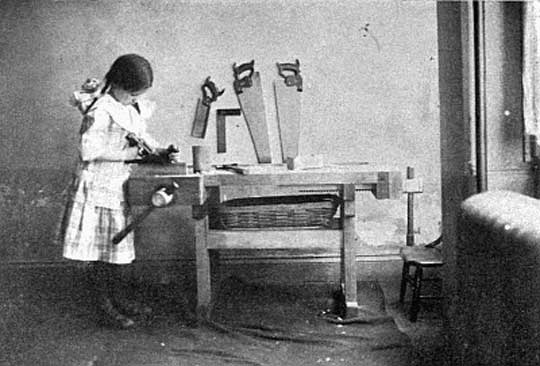
“But after I threw down that gauntlet I was sort of shuffled off the stage,” she says. She’d spent nearly 20 years working for F+W when she was unceremoniously let go in early December 2017. “I would have liked to have more time to have done more, but if I did give a larger platform to people of non-binary sexuality, to women, to people of color, great. I’m glad to have had that platform to do whatever I could for however long I could do it.”
She notes that in hindsight, with F+W filing for bankruptcy about 14 months later, she was actually thankful she left when she did, but at the time, she was utterly shocked. She’d thought it was a fairly safe job. As one of those who got to know her during her last couple of years there, I can attest to her proficiency, professionalism and the unstinting dedication she gave to the operation, as well as to contributors and colleagues. She worked as many hours as it took, seven days a week. She put visiting speakers and authors up in her home when they couldn’t find a place to stay. She never missed a deadline. And through it all, she somehow managed to maintain her graciousness and composure.
“Most people love Megan for her cheerful and genuinely helpful nature,” Chris Schwarz says. “I became bonded to her because she can make grown men cry.”
“We were both hired at F+W in the late 1990s,” Chris continues. “She was in the promotions department (marketing, basically). I was in editorial. We crossed paths occasionally when she asked my fellow editors for help writing junk mail for our magazine. When they put her off or dismissed her, there was a specific hell to pay. She was always professional, but she did not suffer fools.
“When my managing editor left, I wanted to hire her. Megan was spending her free time in our workshop, building stuff and asking woodworking questions, plus she was supremely qualified in the language department. I, however, was afraid to recommend her as a candidate to my boss because she had ripped him in two on many occasions.
“The following is a credit to Megan: It was my boss’s idea to interview her for the job.
“She took the job under difficult conditions. She was taking courses to complete her doctorate. Her boss in the marketing department didn’t want to let her go and asked her to continue writing promotional material. And I was training her as managing editor (the most unforgiving job at a magazine).
“On her first day at the magazine, a technology guy came down to set up her computer station. It wasn’t simple. She needed a PC to do her marketing work and a Mac to do the magazine work — plus logins across the company’s many networks.
“The tech guy they sent generally required everyone to kiss his butt if you wanted the job done. I know this is true because I had chapped lips for about a decade because of him.
“At some point during the day, I heard the tech guy say there was a problem. He was going to leave and come back and finish the job some other day. (This would delay both her work for her old boss and her training at the magazine.)
“Then Megan spoke. It wasn’t loud or angry. I don’t know what she said. But when I walked past him a few minutes later the guy was at her keyboard, working and crying.
“By the end of the day her computers were (mostly) working.
“And the following is a credit to Megan: She and the crying tech guy got along just fine for years after that.
“She’s the best co-worker and employee I’ve ever had. Works like the devil. Holds herself to the highest standards possible. And she will not take shit from anyone.”
Back to Megan: “Of course it hurts,” she says. “It feels like you’re being let go because you weren’t doing a good job. In the last few years I was working 80 hours a week and giving everything to make the magazine and related publications as good as I could with the resources I was given, which were few.” She had given up her goal of teaching literature, a career plan in which she’d invested years of work and money, for the job.
“What the hell do I do now?” she wondered. “I was terrified. I thought that everything I had accomplished was gone.” She texted Chris immediately: “-30-” which, she explains, is “what you used to put at the bottom of the raw copy of a newspaper article to signify the end.”
Straightaway, he met her downtown — at a pub, where, she says, “I had a drink. And I went home and had many more. That was Dec. 5, 2017. On Dec. 6 I had the worst hangover I’ve had since I was an undergrad in college. I don’t recommend [getting drunk] as a coping mechanism.”
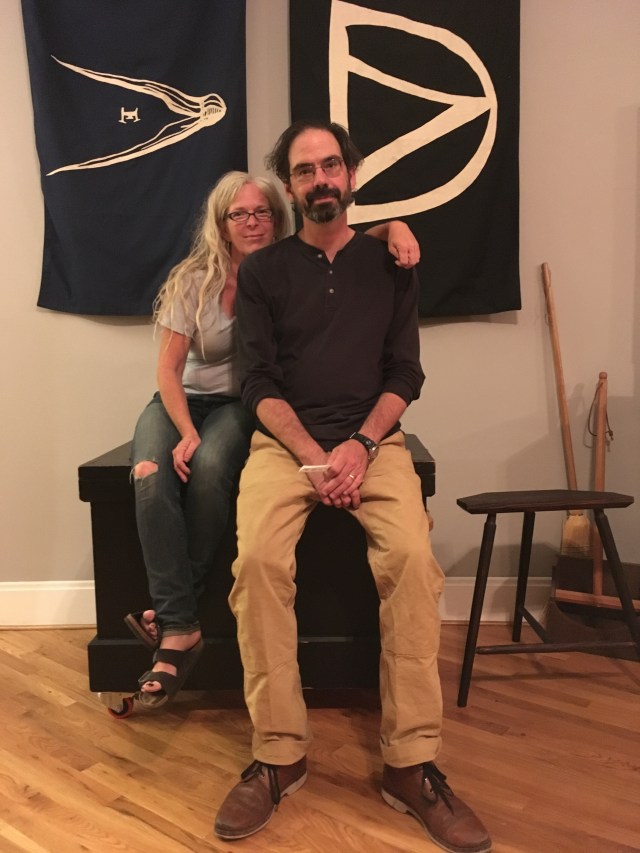
She and Chris had been talking for some time about what she might do if and when she left Popular Woodworking — maybe work on a book with him, do some more editing. She had copy edited almost every book Lost Art Press published, working on the fringes of her already-demanding job. After being laid off she didn’t spend any money for about six months. She was terrified. “How am I going to pay my bills?” she wondered.
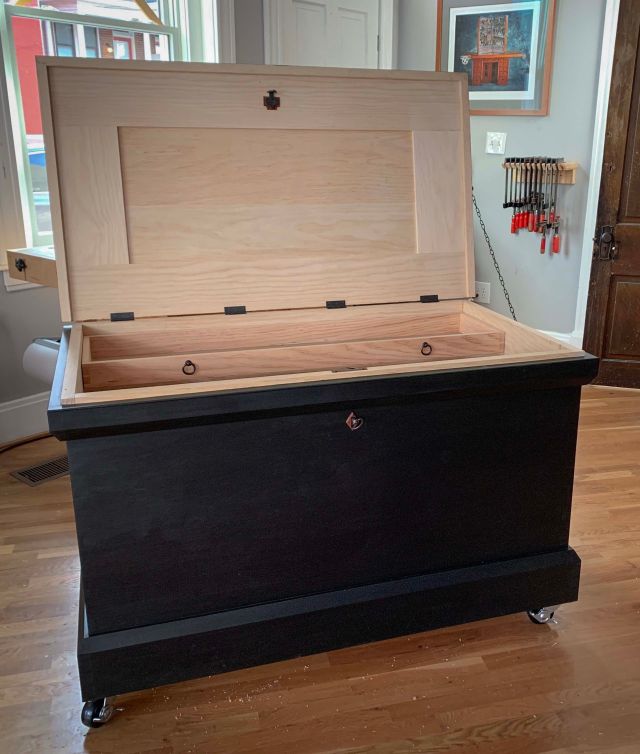
And that’s how Lost Art Press’s “The Woodworking School That’s Not a School” got its start. Chris offered her the use of his storefront shop to teach classes. She taught her first class in February, just weeks after being let go. It filled up quickly, and she says that’s when she realized, “I think it’s going to be alright.” Chris encouraged her to teach more classes. (By now she has taught so many classes on the Anarchist’s Tool Chest and the Dutch Tool Chest that she could probably teach both in a blindfold.)
Here Megan pauses. “There have been two men in my life who helped to shape it more than any other,” she says. “Jonathan Kamholtz and Chris. Dr. Kamholtz encouraged me to go to grad school when I thought I wouldn’t amount to anything. I don’t think I would have gone without him. Hell — I’m not sure I would have finished my undergraduate work without his encouragement.” As for Chris, she says, “he has always made me think I could do something with woodworking, and helped me to do it. And he’s one of my best friends.”
Megan began doing more copy editing for Lost Art Press, more work with InDesign, more writing for the blog. Chris urged her to contact other schools about freelance teaching, and encouraged her to form her own publishing business, Rude Mechanicals Press. (She named the business after “rude mechanicals” (skilled laborers) in “A Midsummer Night’s Dream.” Her Instagram handle, @1snugthejoiner, comes from the name of “rude mechanic” Snug the Joiner.) Chris also helped her publish a new edition of Peter Nicholson’s Mechanic’s Companion, sharing his advice and allowing her full access to the scanner in his home while he and his family were on vacation so she could scan the pages of an original copy.
“Chris and his business partner, John Hoffman, gave me all the resources to make my transition into small publishing easier so I didn’t have to spend much money doing it,” she says.
In addition to writing, editing, publishing and teaching, she copy edits Mortise & Tenon Magazine and is editor of The Chronicle, the journal of the Early American Industries Association. She’s also working on that book about furniture in the plays of Shakespeare and others that she had wanted to do for her dissertation, as well as a book on Shaker furniture.
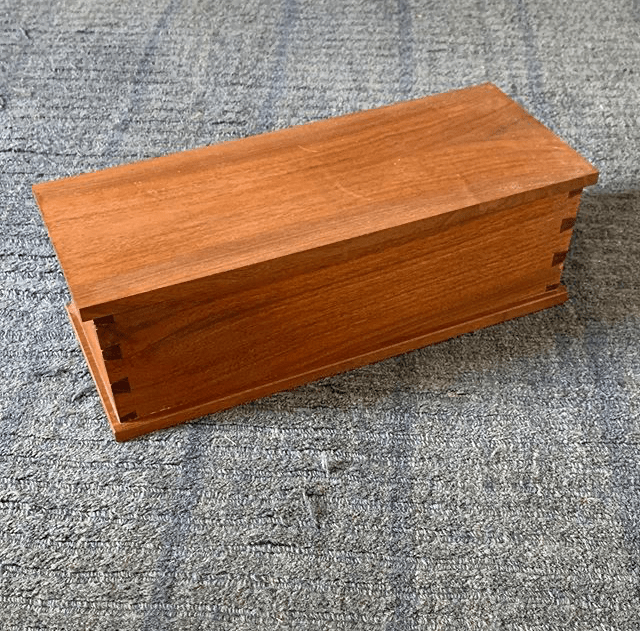
Not long after Megan started working at Popular Woodworking, she built a small dovetailed box in a class with Kelly Mehler. She showed it to her grandfather, who said women don’t belong in the shop. “Oh, those are terrible dovetails,” she recalls him saying. “They shouldn’t have let you use good wood for a beginner project.”
I’ll show you, she thought. As hurt as she was by his remarks, she thinks he’d be proud of her now. “The way to get me to do something is to say ‘you can’t do that.’ I’m not going to let it beat me. I’m going to figure it out.”
That same resilience supports her now. As a freelancer, Megan feels fortunate in this time of enforced isolation to be able to so much of her work from home. Like most of those who teach woodworking, she has lost some income due to the coronavirus pandemic, but she’s upbeat in her outlook.
“I love teaching,” she says. “I went to school to teach. I absolutely miss teaching people; that’s been the worst thing for me. And I know I’ll be teaching people [again]. You can learn from books and magazines, but having someone there to help you and show you, there’s nothing like that. And there is little as satisfying as helping people get better at something they love to do.”
— Nancy Hiller, author of “Making Things Work“
